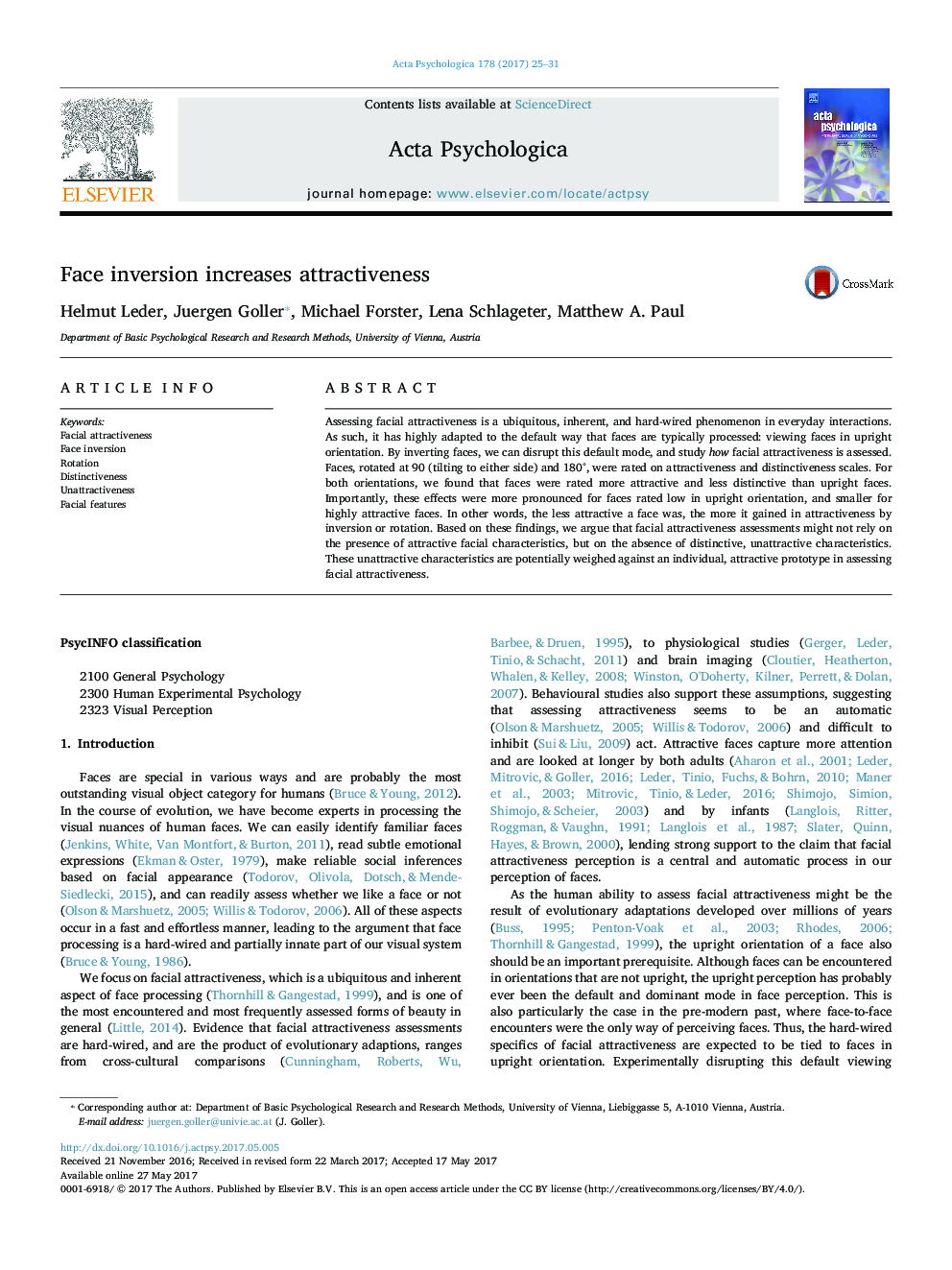| Article ID | Journal | Published Year | Pages | File Type |
|---|---|---|---|---|
| 5040293 | Acta Psychologica | 2017 | 7 Pages |
â¢Face inversion increased facial attractiveness ratingsâ¢Less attractive faces gained most by inversionâ¢Reversed results for facial distinctiveness ratingsâ¢Evidence for facial attractiveness assessments based on unattractive features
Assessing facial attractiveness is a ubiquitous, inherent, and hard-wired phenomenon in everyday interactions. As such, it has highly adapted to the default way that faces are typically processed: viewing faces in upright orientation. By inverting faces, we can disrupt this default mode, and study how facial attractiveness is assessed. Faces, rotated at 90 (tilting to either side) and 180°, were rated on attractiveness and distinctiveness scales. For both orientations, we found that faces were rated more attractive and less distinctive than upright faces. Importantly, these effects were more pronounced for faces rated low in upright orientation, and smaller for highly attractive faces. In other words, the less attractive a face was, the more it gained in attractiveness by inversion or rotation. Based on these findings, we argue that facial attractiveness assessments might not rely on the presence of attractive facial characteristics, but on the absence of distinctive, unattractive characteristics. These unattractive characteristics are potentially weighed against an individual, attractive prototype in assessing facial attractiveness.
